“I might have been overly optimistic in bringing the shorts, but you never know, it might get reasonably warm by the end of the week.”
The Man of Kent, Day 1 in Malta.
The Man of Kent’s requirements for this year’s holiday were simple; a location that is “warm and sunny.” Malta, it seemed, would be a shoo-in. It’s a country with 300 days of sunshine a year, after all.
As previously mentioned, The Man of Kent has strong views on what summer should involve. He also has clear ideas of what holidays abroad should be like. In this case, he had envisaged basking in Maltese sunshine, slapping on the factor 50 at regular intervals, and sipping cold beers outside while taking in views of Valletta’s Grand Harbour. Shorts and summery shirts were piled into the suitcase accordingly.
Alas, dear reader, whilst it was sunny, ‘twas not the warmest. Average Spring temperatures in Malta are around 18-20 degrees Celsius, which is not shorts-and-sandals weather for most people. It barely touched 18 degrees while we were there. Are you getting déjà vu yet? Because we have been here before. At least The Man of Kent packed a hoody this time.
Weather aside, we came home after a brilliant week in Valletta and Sliema, determined to return to Malta to see more of this fascinating country. Today’s blog is about what we did on our holiday; I hope it inspires you to take a trip to this Mediterranean beauty.
Malta – the island fortress
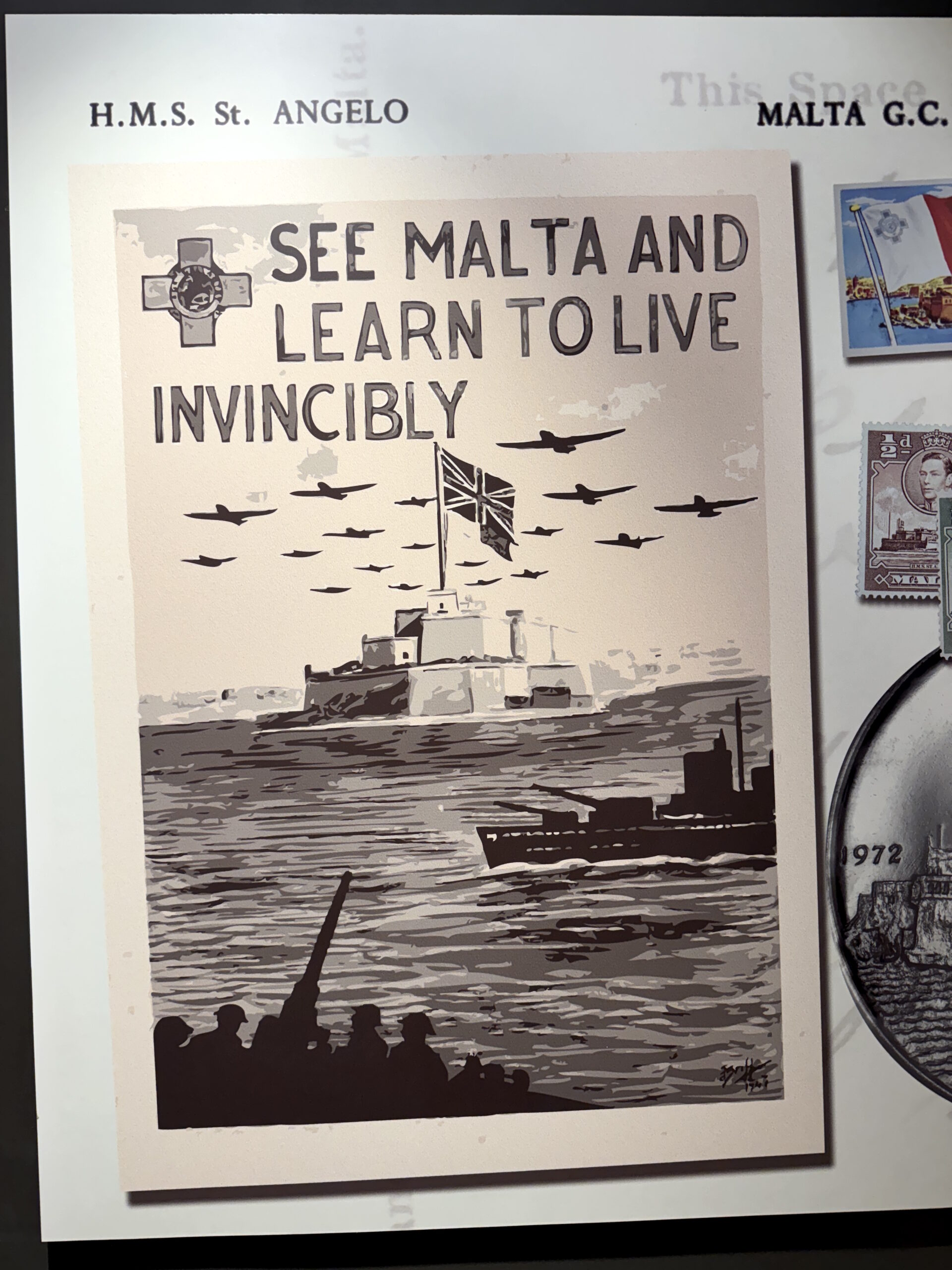
This tiny Mediterranean island has withstood ferocious battles throughout history, from the Great Siege of Malta in 1565 to incessant bombardment during the Second World War. Voltaire wrote that, “nothing is better known than the siege of Malta,” while King George VI awarded the George Cross “to the Island Fortress of Malta to bear witness to a heroism and devotion that will long be famous in history.”
During World War I, over 100,000 sick and wounded soldiers were taken to Malta to recover, leading the country to be described as “the nurse of the Mediterranean” by the Reverend Albert Mackinnon.
Malta has been passed from pillar to post, empire to empire, over the years. It was given to the Order of St John as a refuge in 1530, but had Arab, Norman and Aragonese rulers before that. The Order was kicked out by Napoleon in 1798, and Malta became a British protectorate in the 1800s, eventually becoming independent in 1964. The traditional red phone booths and post boxes dotted everywhere – familiar and disconcerting to English tourists – are a reminder of the British connection. (And yes, of course we took touristy photos with a red phone box).
Valletta
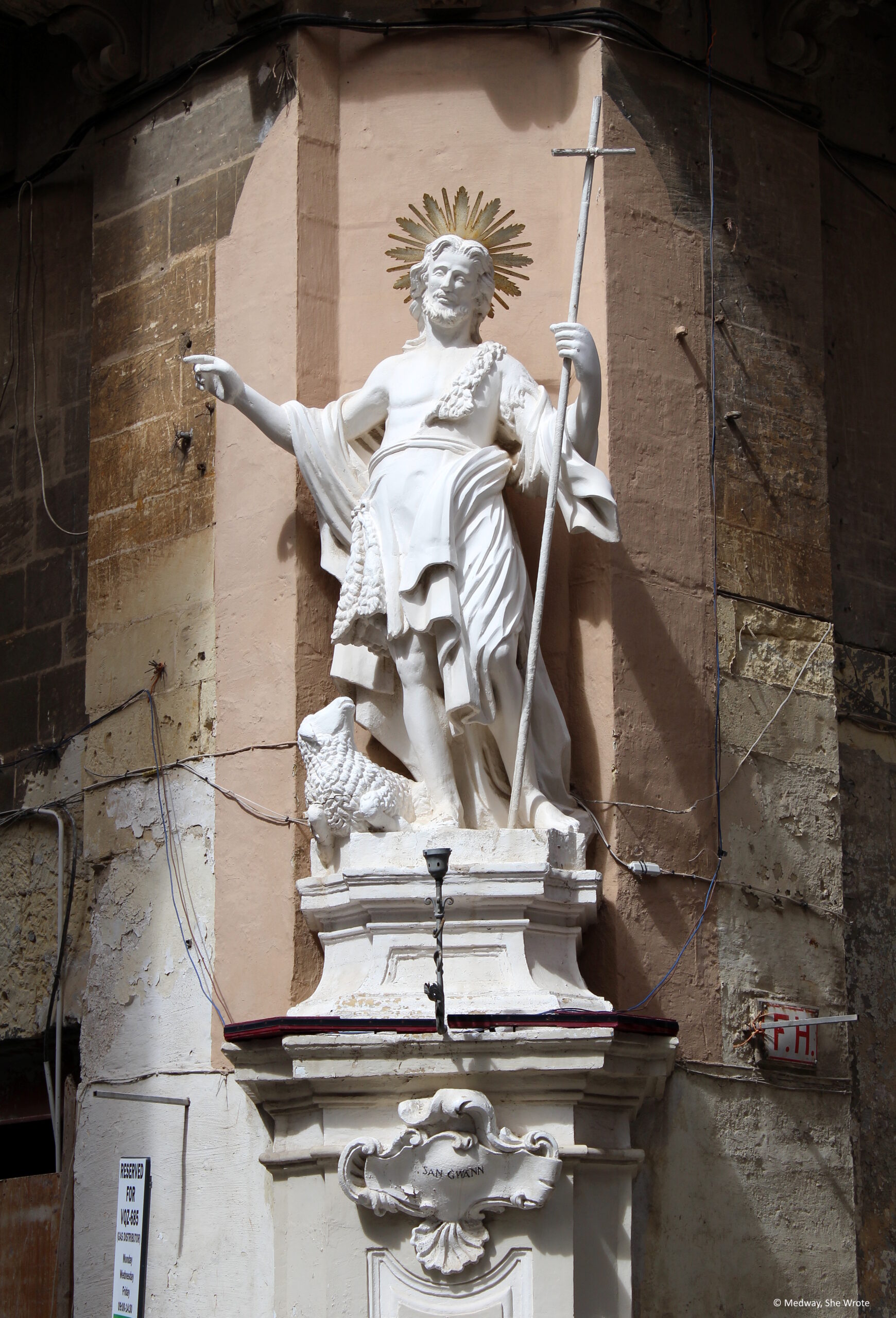
Valletta, the capital, is named after Jean de Vallette, Grand Master of the Order of St John and defender of Malta during the Great Siege of 1565.
It is a beautiful city of creamy stone and spires. It’s traditional but modern; a place where buzzy hole-in-the-wall bars and coffee shops snuggle beside towering ancient churches and tall houses with colourful Maltese balconies. It wears its faith and religious history proudly, with statues of saints on street corners and icons on doorways. There are 365 churches in Malta, one for every day of the year. 28 of those are in Valletta, so you can’t go very far without encountering a church, basilica or cathedral. It’s also a city with gorgeous sea views for miles, and its Grand Harbour is one of Europe’s most picturesque sights.
Valletta is also a city of steep hills, and many, many steps. If you’ve ever walked down the steep bank from Grey’s Monument to the Quayside in Newcastle, pretty much all of Valletta is like that. You’ll certainly improve your leg muscles and stamina while sightseeing here!
What to see in Valletta
St John’s Co-Cathedral
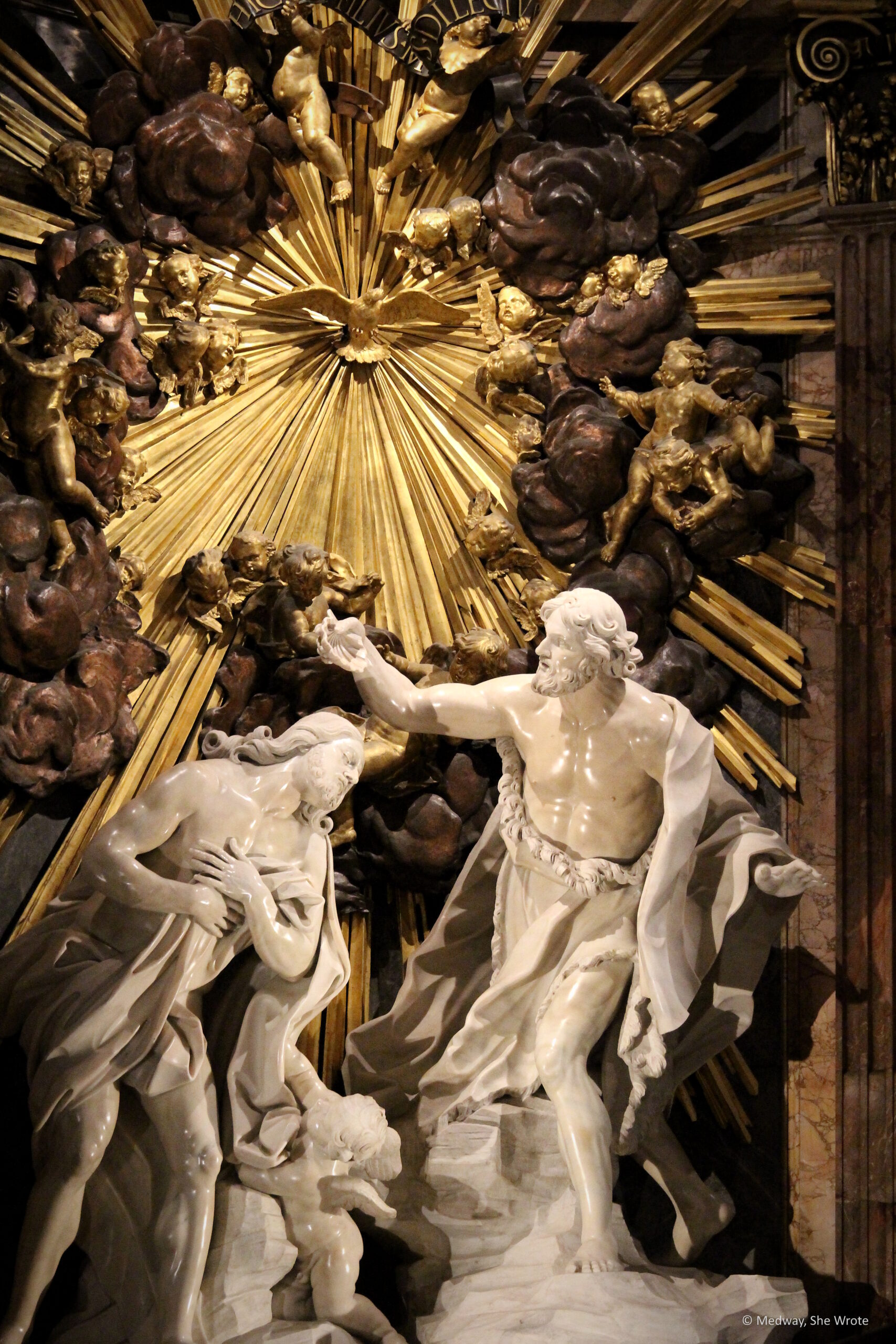
As far as The Man of Kent and I are concerned, if a place has a cathedral, we will visit it. If that cathedral has a tower, we will climb it. If it has a crypt, we will descend and see the tombs (The Man of Kent somewhat less enthusiastically than me). St John’s Co-Cathedral ticks all these boxes.
Over 6,000 bombs were dropped on Valletta during World War Two, and it is considered a miracle that St John’s Co-Cathedral was not hit. Outside, the building is plain and austere. Inside, it’s like an explosion in a gilt factory.
The Man of Kent and I take very different approaches to visiting museums, cathedrals and historic sites. I like to meander around, enjoying the atmosphere and taking photos. I feel bogged down by audioguides, and I usually only read information about objects that particularly draw my attention; otherwise, museum fatigue sets in.
The Man of Kent, however, has almost unlimited stamina in this regard. He will read all – and I mean all – available information and listen to entire audioguides. Have you ever wondered whether anyone actually goes round a museum reading all those tiny plaques of information next to the artefacts? The Man of Kent does.

But this diligent attention to information makes The Man of Kent an ideal travelling companion. I toddle about taking photos and reading bits and bobs, and he fills in the gaps for me when we catch up to each other.
Because he listened to the audioguide, I can tell you that there are over 400 knights of the Order of St John buried in the cathedral, most of whom rest beneath elaborate tombstones on the floor. Jean de Vallette himself is buried in the crypt. The stunning ceiling is by Mattia Preti. There are nine chapels inside the Cathedral, each one dedicated to a different saint. Many of these have spiral columns, which became all the rage after St Peter’s Basilica in the Vatican got some in the 1600s. Apparently even cathedrals have to keep up with the papal Joneses.
While our approaches to browsing historic sites may differ, The Man of Kent and I both love a proper guided tour. This year, St John’s Co-Cathedral started offering guided tours of the belfry and clock tower. Marilyn, our guide, took us up and along the balcony from which the Grand Master would wave to the crowds after being selected, to the top of the Cathedral’s clock tower. Amazingly, the cathedral’s clock mechanisms had to be wound by hand every 15 minutes until 2008!
St John’s is also a must-see for art-lovers. It’s home to the only painting signed by Caravaggio himself, The Beheading of St John the Baptist, and has a superb virtual exhibition that explains the history and techniques of the painting. It’s also home to Caravaggio’s St Jerome Writing. There’s plenty of information about the techniques of that piece too, but I skipped straight to the juicy bit about the theft of the painting. It was stolen in December 1984, and the thieves demanded a record EUR1.15 million ransom. The ransom wasn’t paid, but the painting was recovered two years later.
Other cathedrals and churches in Valletta
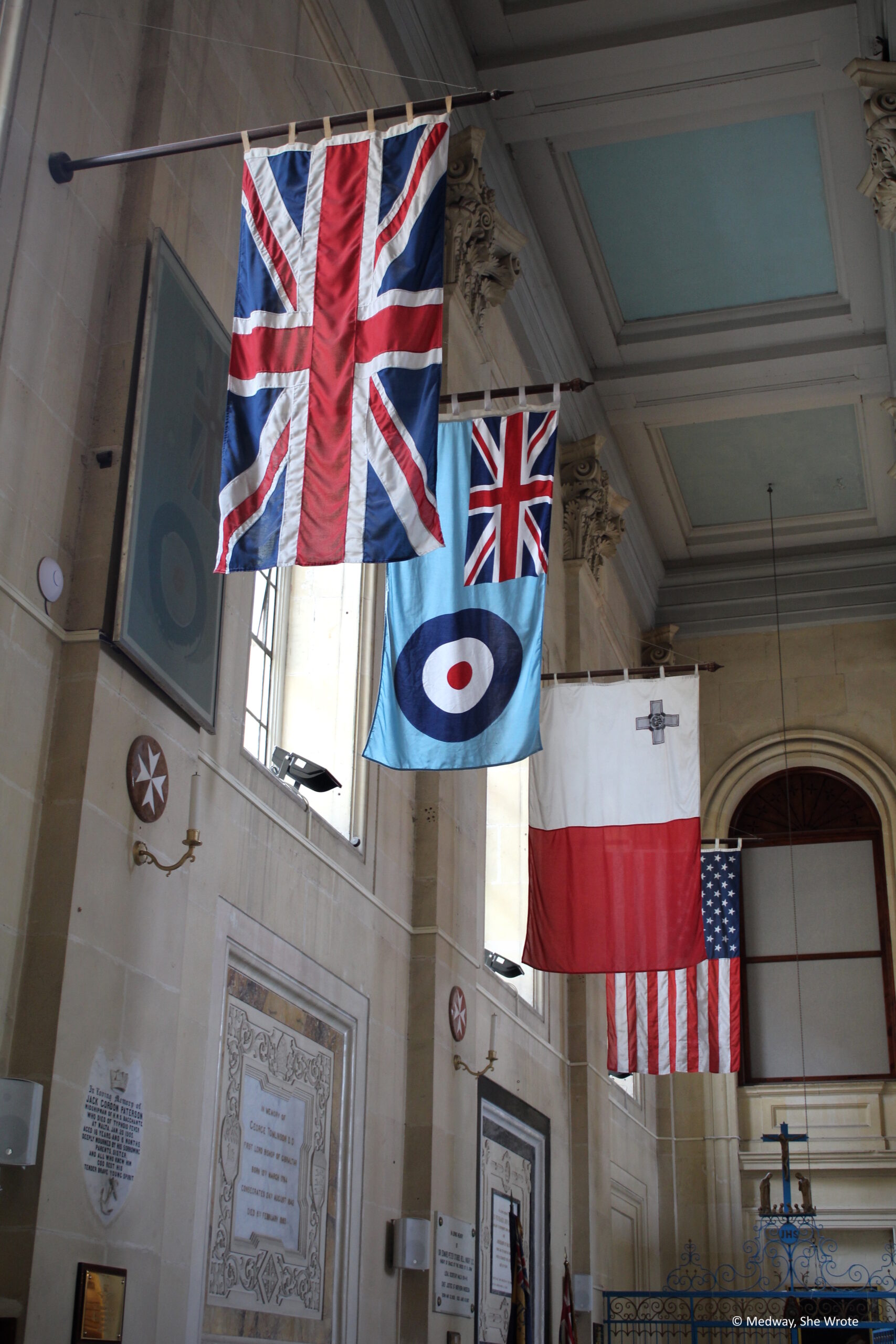
We also visited the Church of St Paul’s Shipwreck, one of the oldest in Valletta, and St Paul’s Pro-Cathedral. The latter was funded by Queen Adelaide (aunt to Queen Victoria) and houses memorials to the armed forces who defended Malta in the Second World War. The Man of Kent swears he bumped into Linda Robson and Lesley Joseph from Birds of a Feather on the steps of St Paul’s Pro-Cathedral as we were leaving, but I can’t confirm this as I was packing the camera bag at the time.
The Grand Master’s Palace
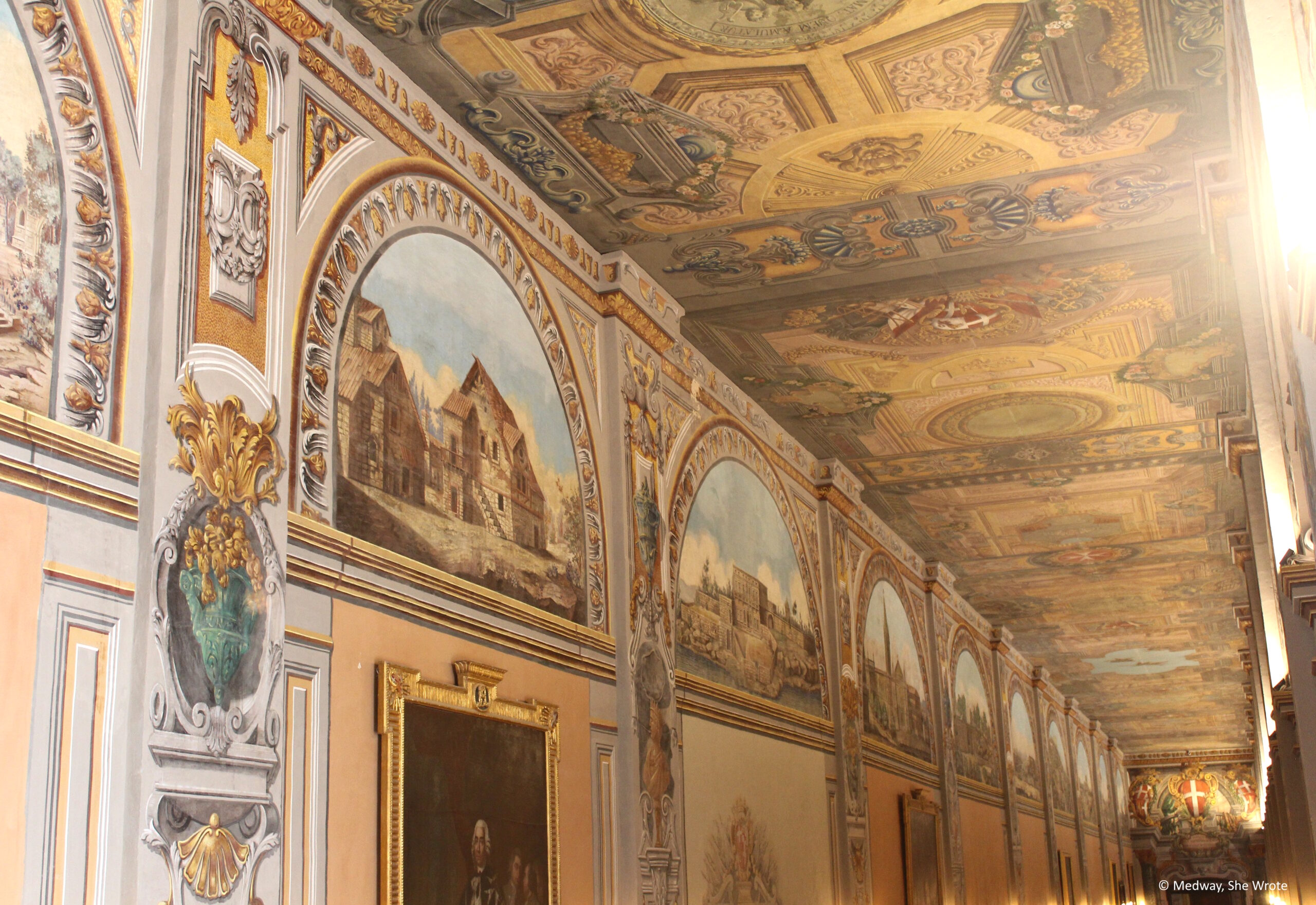
The Grand Master’s Palace opened to the public in 2024. It’s a fairly unassuming building from the outside, but it was originally home to the knights of St John and is now the Presidential palace. Inside, you can see the George Cross that was awarded to Malta for bravery during World War Two. It also has an enormous armoury. Pop into the National Library next door to see the some of the vast 9,700-volume collection of books left by Knight Louis Guerin de Tencin (it’s free, but you will need to show a passport on entering).
Casa Rocca Piccola
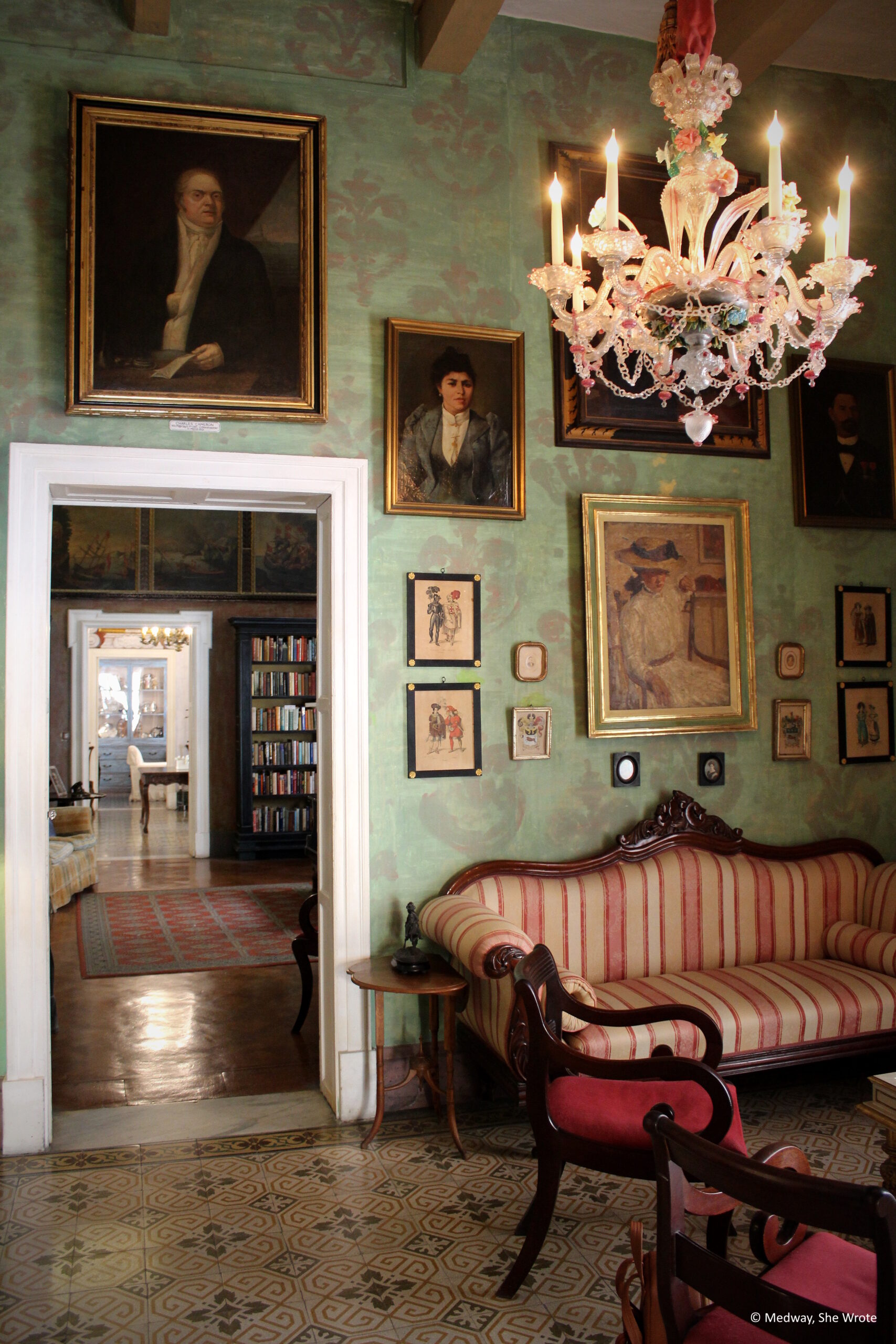
Casa Rocca Piccola is the family home of the de Piros, a Maltese noble family, and a ‘living museum.’ You can wander around the house at your leisure, and you may even bump into the Marquis himself! You can also stay there as a guest.
This colourful house is stuffed with treasures and curios, beautiful art, ornaments and furniture, but there’s a comfiness and lived-in atmosphere to every room. You can feel that it’s a real, much-loved family home. Walking around, I felt like I had gone to visit a rich and eccentric relative who had just popped out, but would be back any minute to tell me more about the antique sedan chair on the landing. A pleasant way to spend a hour or two.
Although we did not encounter the Marquis himself, we were honoured to meet an avian member of the Maltese aristocracy on our visit – the family parrot, Kiku III!
The Lascaris War Rooms
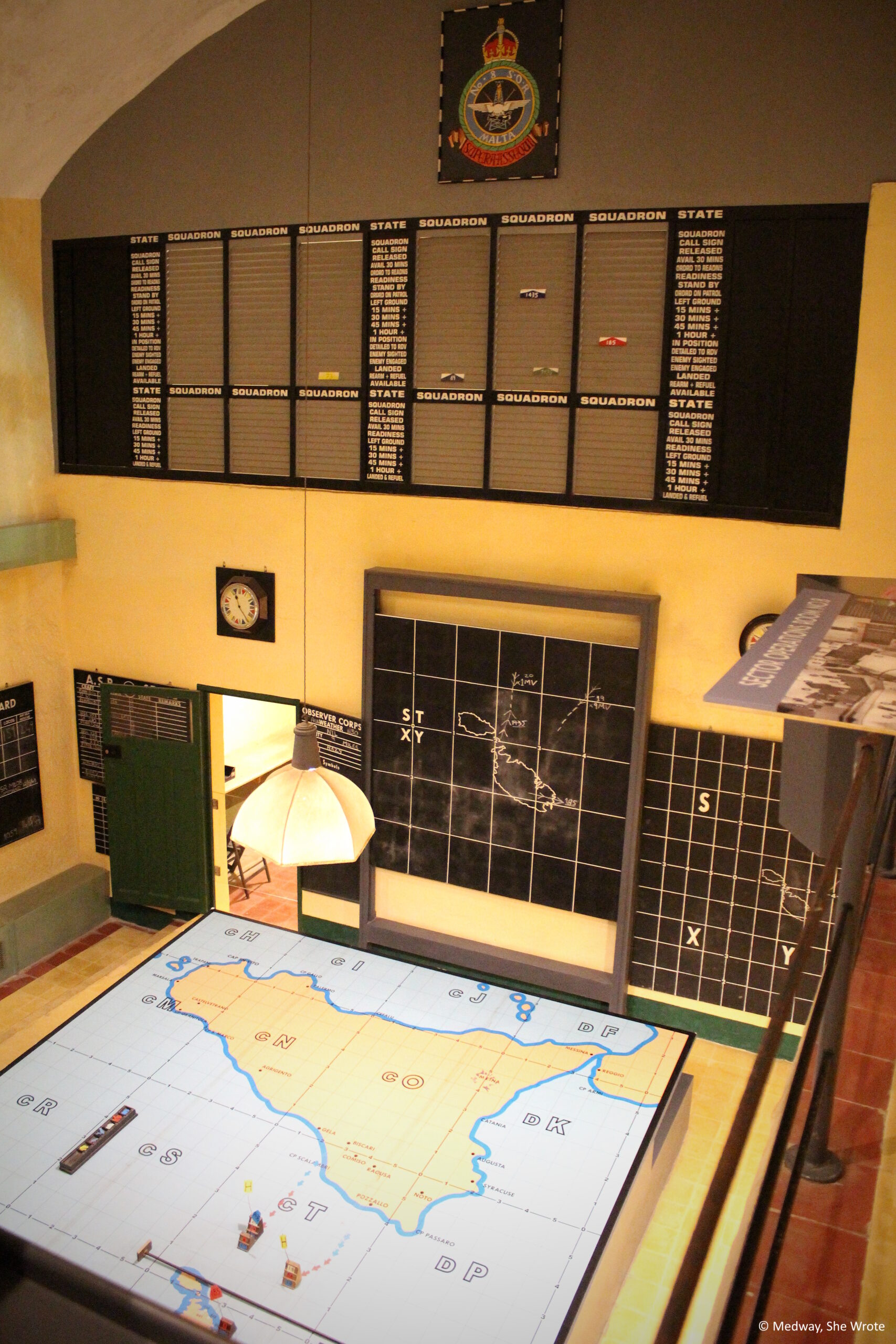
Sitting 150 feet below Valletta, these underground rooms were the secret Combined Headquarters of the armed forces in the 1940s, and used by NATO to track Soviet submarines until the 1970s. It’s one of the most captivating places I’ve ever visited.
At Lascaris, we learned about how Malta was the base for the Allied invasion of Sicily (Operation Husky), the largest amphibious military operation ever attempted until the D-Day landings in Normandy. We also learned about Malta’s key role in Operation Mincemeat, how the US Navy relied on New York mafiosos such as ‘Lucky’ Luciano for intelligence on Sicily, and that – astonishingly – 95% of wartime carrier pigeon messages arrived safely at their destinations, thanks to pigeons’ ability to fly above the range of sniper fire.
I was particularly intrigued by the story of Mancunian cabaret artist Christina Ratcliffe and her troupe, the Whizz Bangs. Ratcliffe toured Malta to entertain the troops, but became an aircraft plotter at Lascaris and was later awarded the British Empire Medal for her efforts.
I also discovered that MV Rochester Castle was one of just five ships that managed to reach Malta to deliver vital supplies during Operation Pedestal in 1942. I wondered if this ship had Medway origins, given its name. Perhaps it was built at Chatham Dockyard? Apparently not; it was built at Belfast by the Union Castle Line, which named all of its vessels after UK castles.
Where to eat and drink in Valletta

After a long, hard day of sightseeing, The Man of Kent and I fall upon plates of food like two starving gannets. In Valletta you can find every kind of cuisine, from traditional Maltese dishes to contemporary fine dining, and plenty of international options.
Our favourite meal was at The Harbour Club, where each superb course is themed around a different part of Valletta. There are spectacular views from the ground floor but the basement (which used to hold ice shipped all the way from Mount Etna) is just as lovely. The service is friendly, and it offers excellent Maltese wine and cocktails. For a similarly fancy night out, try Fifty Nine Republic, where we enjoyed rabbit ragu and decadent chocolate truffles for dessert. We also had great contemporary Indian food at The Naan Bar.

We became big fans of pastizzi, a traditional Maltese savoury pastry usually filled with ricotta or curried peas. They are a bit like a pasty and make for a delicious, on-the-go lunch during a busy day of sightseeing. Lot 61 and Gourmet Kafe provided top-notch caffeine hits on our wanders.
Drinks-wise, 67 Kapitali will slake your thirst for local craft beer; it has one of the widest ranges on the island. For fabulous cocktails, don’t miss Kamy, a snug, art-themed, bohemian bar, and – just around the corner from Kamy – the excellent Sip and Sail.
Beyond Valletta: The Three Cities and Fort St Angelo
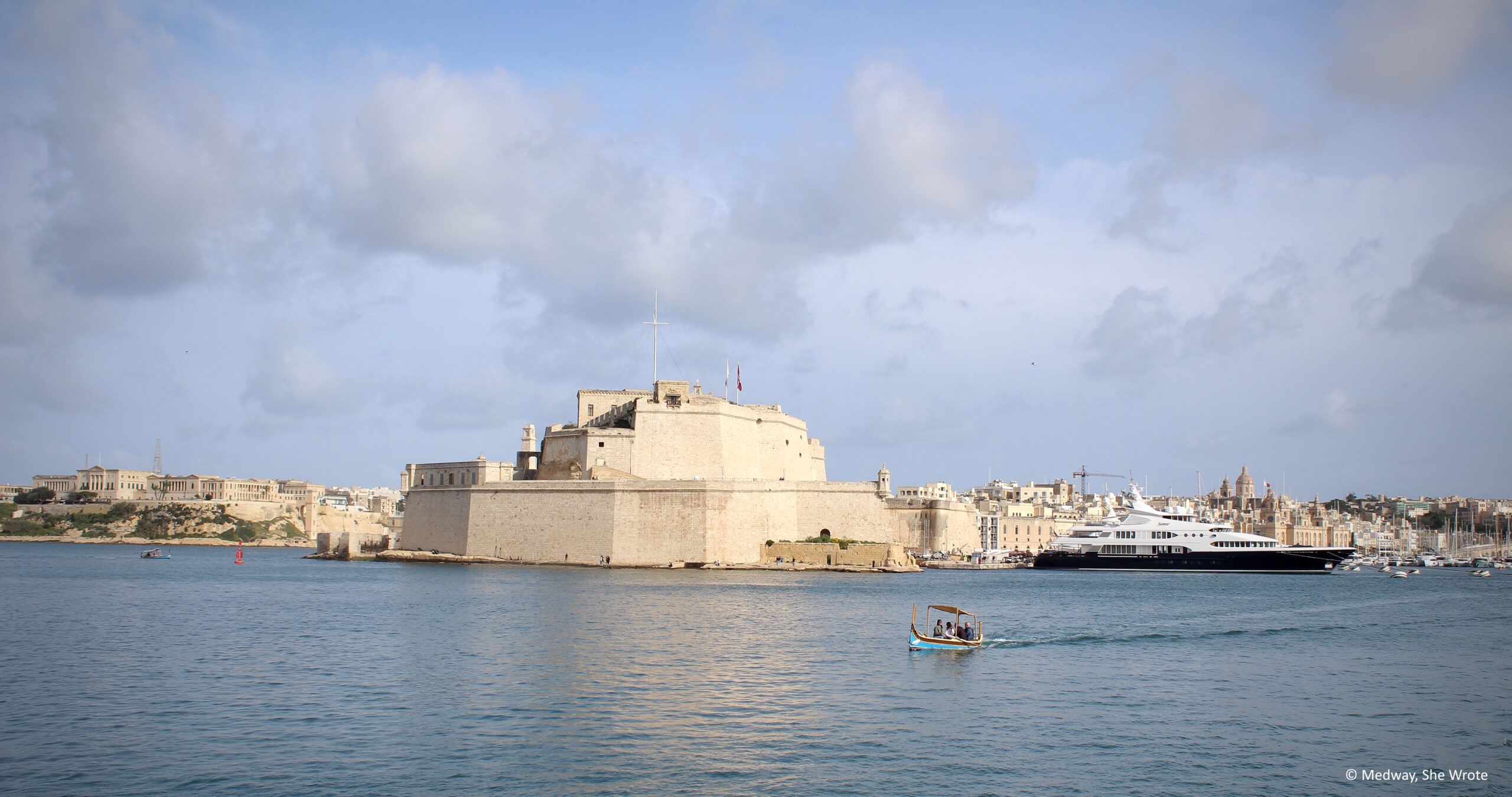
The so-called Three Cities of Vittoriosa, Senglea and Cospicua sit across the harbour from Valletta, easily reachable by ferry or Maltese luzzu boat. The Man of Kent proposed a jaunt there after perusing the guidebook over breakfast one morning. (Yes, I do take a hard copy guidebook on my holidays, and no, this is not just another pathetic excuse to buy yet more books. It just means I don’t need to rely on having an internet connection to look stuff up.)
Vittoriosa (meaning victorious) was named following the Great Siege of 1565, to commemorate the role the city played in the defence of the island. Fort St Angelo dominates, its massive stone ramparts towering over the harbour.
Fort St Angelo is famous for being the original headquarters of the Order of St John. From this mighty hilltop position, Jean de Vallette defended Malta against a massive Ottoman invasion force of around 50,000 during the Great Siege. De Vallette had only 500 knights and around 6,000 Maltese on his side, but managed to hold out against the Ottomans during the bloody, four-month campaign.
Fort St Angelo became the epicentre of another great siege during the Second World War, during which it took 69 direct hits. After the war, it continued to be used as a Royal Navy base. Despite Malta becoming independent in 1964, treaties with the British government meant that the Royal Navy remained stationed at Fort St Angelo. When HMS London left on 31 March 1979, officially handing control of the Fort back to the Maltese people, it marked the end of British occupation of the island. Freedom Day, held on 31 March every year, commemorates the occasion.
Fort St Angelo has had its share of illustrious prisoners, including Caravaggio, and like any historic place worth its salt, also has a ghost – The Grey Lady. She is said to be the murdered mistress of Captain di Nava and a protective Maltese ħares or guardian spirit.
Sliema
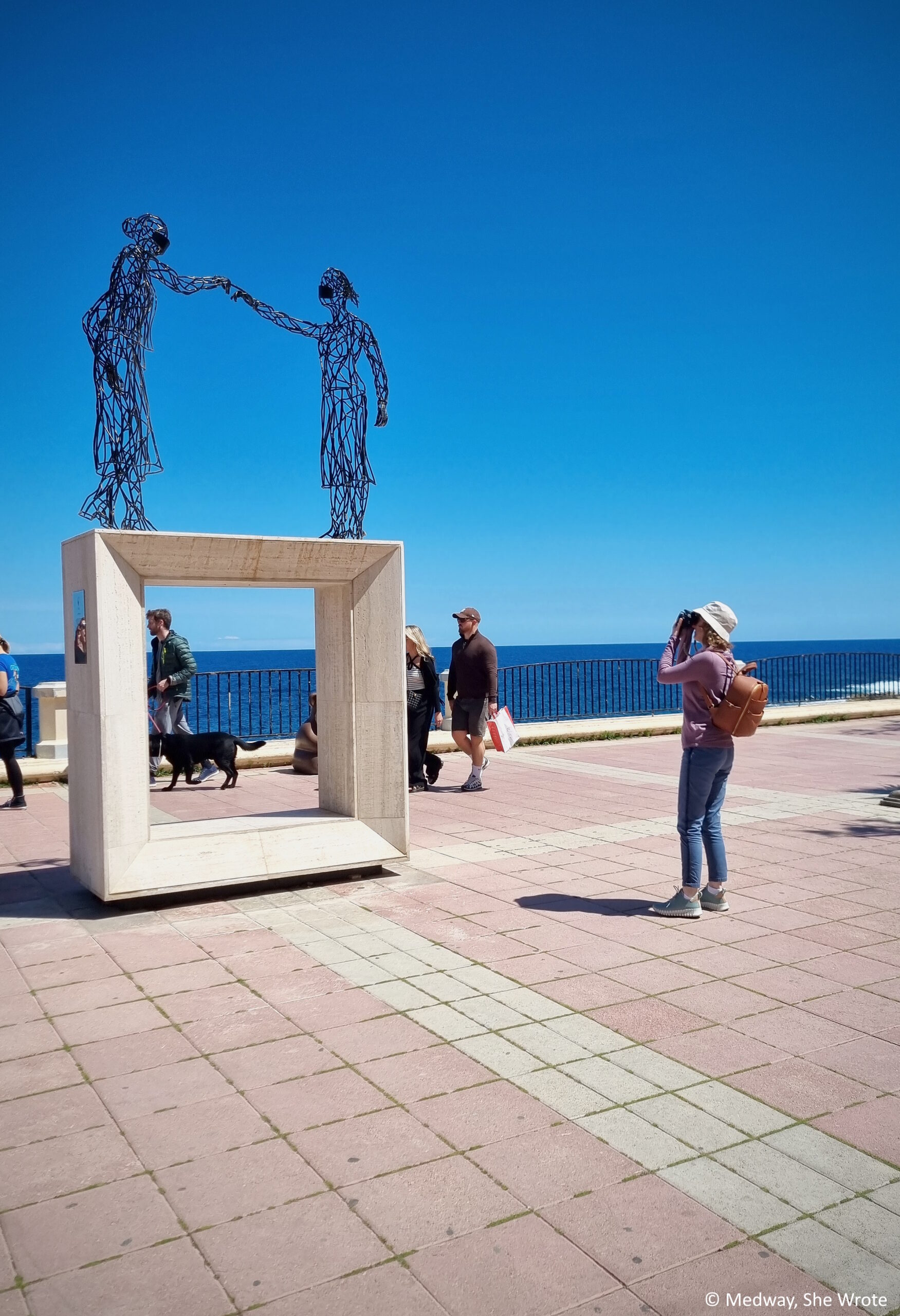
Sliema is just across the harbour from Valletta. It’s mostly modern apartment blocks, but has its fair share of historic architecture to admire as well. It sits between the seafront on one side, and the Strand facing the harbour on the other. Compared to Valletta, it’s refreshingly flat. It’s an easy ferry ride from Sliema to Valletta in the daytime (ferries go between the two every 15 minutes) and a short, inexpensive taxi ride back at night.
You can take a lovely walk from Sliema to Paceville and St Julian’s up the coast (about 45 minutes), passing the Covid memorial, Balluta Bay and soaking up sea views.
Where to eat and drink in Sliema
Our hotel was in Sliema, and Busy Bee coffee shop on the Strand became our breakfast haunt for the week. Croissants generously filled with great dollops of lemon curd or apricot jam with Genna tea for me, and pancakes with bacon and maple syrup for The Man of Kent. Yum. The cake and patisserie selection is dreamy too.
Ta’ Kris is a Sliema institution, serving hearty, home-cooked Maltese classics (think bragoli, rabbit, etc) in generous portions and at very reasonable prices. I’d recommend booking ahead; it was heaving when we arrived at 7pm and the staff were turning people away throughout the evening.
The Brew Grill and Brewery on the Strand serves a huge range of craft beers brewed on site, alongside a menu that I’d summarise as ‘meaty things with chips’ – hefty burgers, platters, etc. It also serves cocktails (try the IPAperol spritz) and does live music. There’s no shortage of bars, pubs and restaurants on the Sliema Strand, but tucked away further up is The Hole in the Wall, a small, bustling place that does a good range of beers and cocktails without the clubby vibe of the Strand bars.
And finally

We were after incredible history, beautiful scenery, great food and drink, and sunshine. Boy, did we find it here, even if The Man of Kent would have liked it to be about 10 degrees hotter. If you’re wondering where to go on your next holiday, I’d heartily recommend Malta.
Next stop: Sicily!
Malta was not the only place we visited on this holiday. After Valletta, we took the ferry to Sicily, for a few days of ancient ruins, dancing, and – as it turned out – one sprained ankle. Stay tuned for more details on that, and subscribe so you never miss a post!
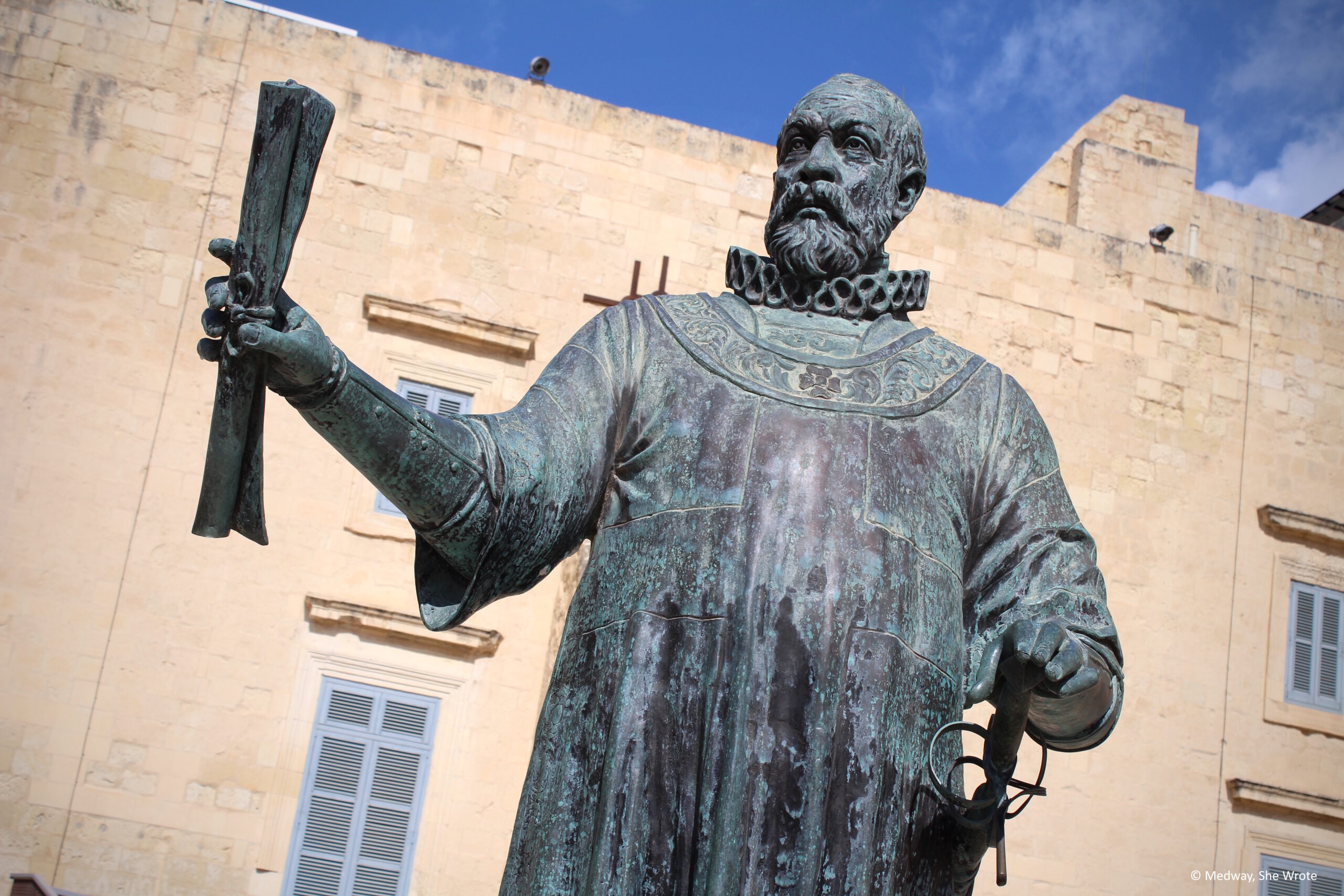
Leave a Reply